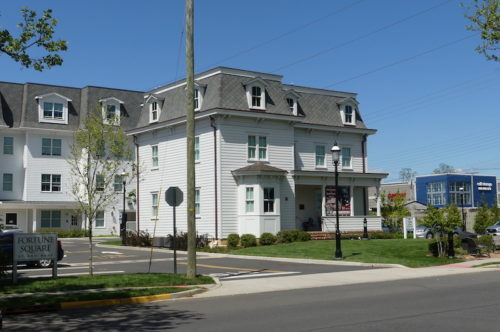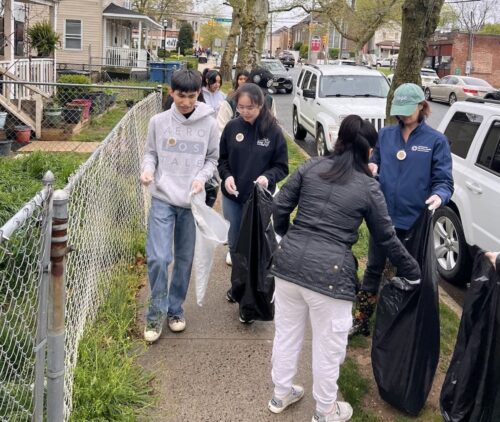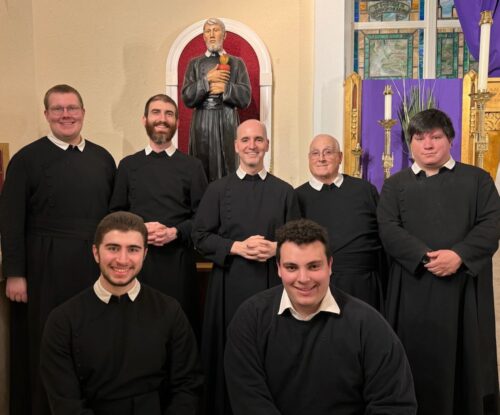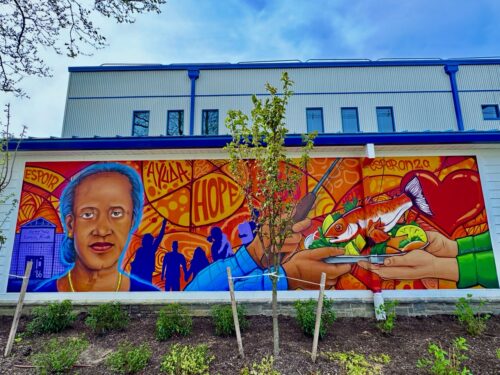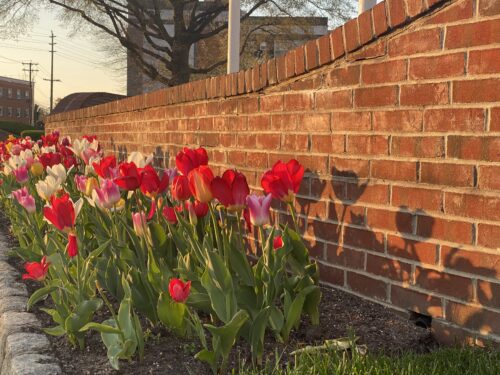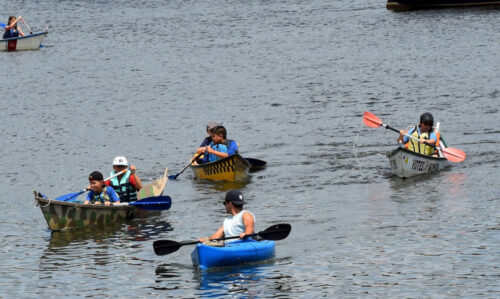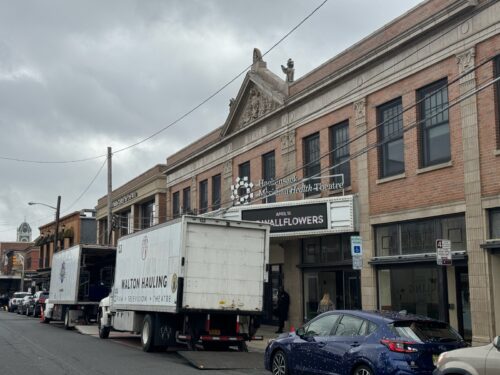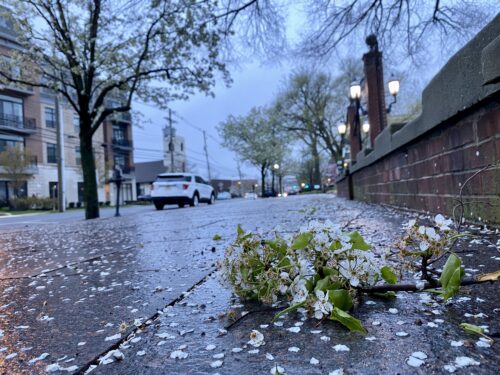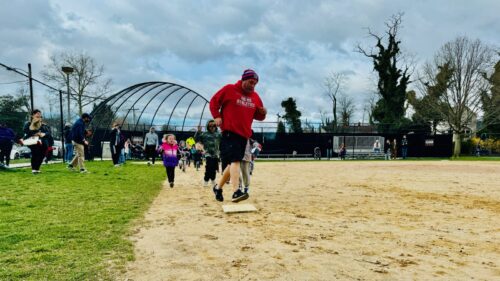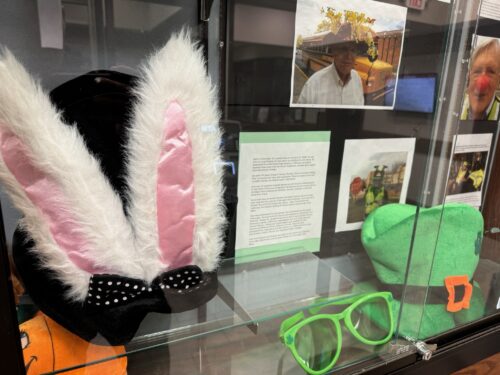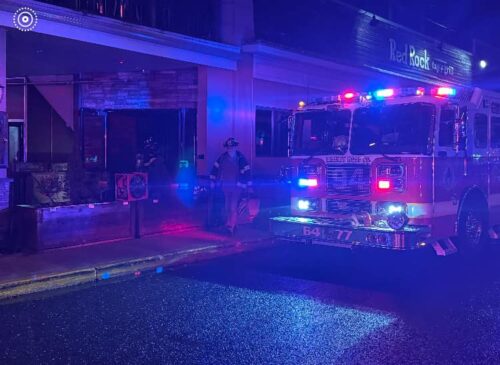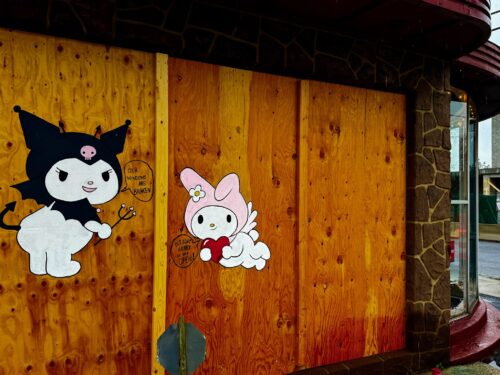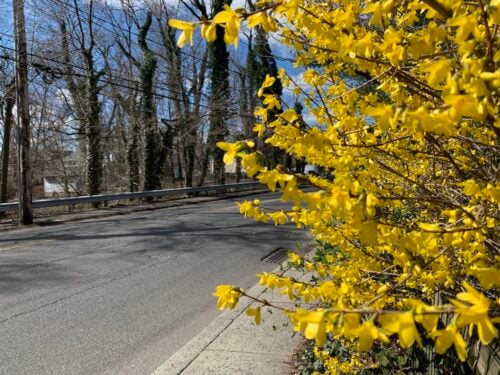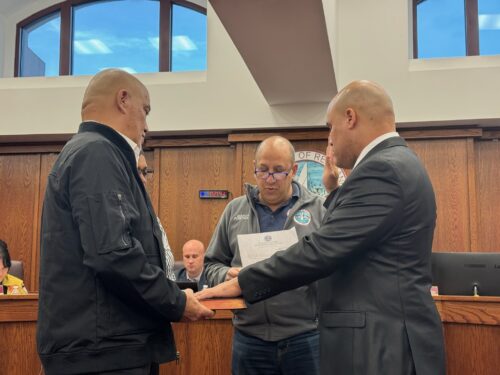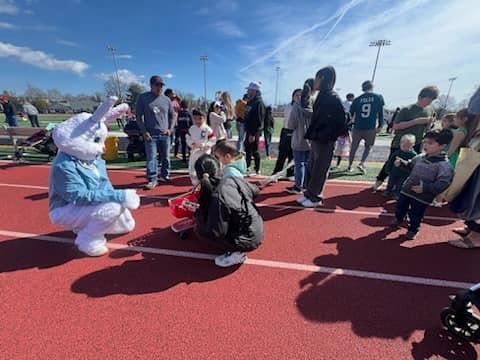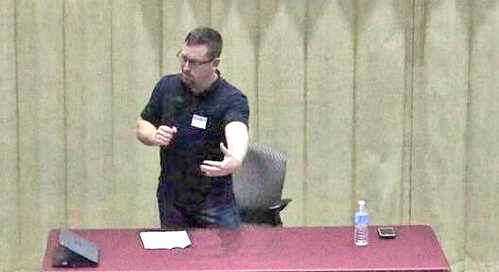
“(Is it) hoax, conspiracy, propaganda, or just a moneymaker for Macedonian teenagers?” asked Joseph Amditis (pictured), as he addressed some 250 students at Red Bank Regional High School recently.
“The definition of fake news has been debated since the election. But that debate has mostly referred to one thing: the spread of inaccurate, misleading, otherwise invented articles passed on as real news.”
Amditis, the associate director for the Montclair State Center for Cooperative Media (affiliated with Montclair University), was invited by the Student Public Policy Group at RBR (partnering with the Network for Responsible Public Policy) to speak at the school, for an audience that included many of the students in the AP English and Journalism classes. During his presentation, Amditis gave the students some examples of fake news — that is, articles that are completely fabricated for the purpose of profit or political persuasion.
The guest speaker explained that it is incumbent on citizens to be able to discern what is real and what is fake, relegating us essentially to act as “internet detectives.” Among the things that citizens must be aware of when evaluating “real” versus “fake” news stories are:
- • Question the headlines or visuals, when they don’t seem to support the context
- • Look at the way punctuation is used — for example, using “?!” on a headline is not what a real journalist would do.
- • Look at the sources — does it have a byline? Does it seem sketchy? No links or sources cited? You can always google it to confirm the sources.
- • Does it contain a warning? Facebook is now flagging fake news with warnings stating that real sources refute this post. The warning link leads directly to the fact-check sources.
The age of social media has promoted the rise of the meme — defined as an image or a slogan which is passed on, which promotes an idea without context or without saying it outright — as a major source of fake news.
Principal Risa Clay targeted the crux of this dilemma when she told her students, “Years ago people only got their news from newspapers and television. Many people now rely on social media. How many people really look at the sources they are reading and sharing? You should always ask, ‘what is the source?’”
Amditis left his listeners with an encouragement to “Call lies, lies — and falsehoods, falsehoods. Not doing so undermines credibility and trustworthiness with the public, even if that frustrates partisans.”
“In turn, cover the partisans who support powerful people who lie.”
The presentation was very well received by the students, with senior Kyle Eber oberving that “We have not seen the effects of the things we learned in history. But, a lot of this is in our face. It is something we are involved with and not voluntarily. We have to bear witness to it and react to it.”
The Montclair State Center for Cooperative Media’s mission is to grow and strengthen local journalism to best serve New Jersey’s citizens. Visit their website for more information.


